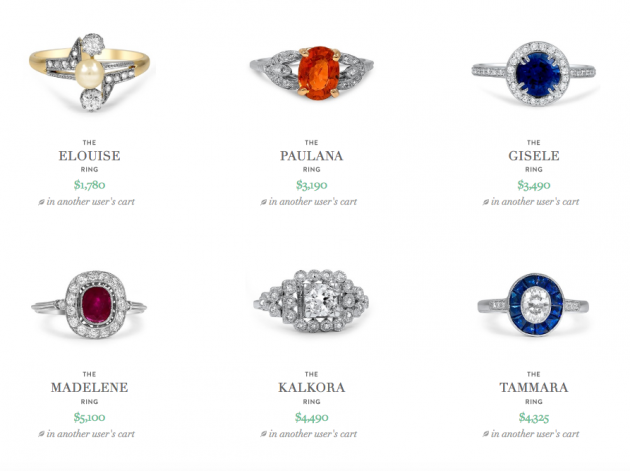
Ethics of emotional intelligence in UX research

There’s no doubt that emotional intelligence plays an important role in UX. But along with all the benefits of having a user-centered strategy, there’s also the potential for unintended abuse of your knowledge and understanding of your customers.
We’ve discussed the dark side of emotional intelligence in UX before, and in today’s article we’ll take that a step further and discuss two ways emotional intelligence can be abused and how to weave some ethical safeguards into your process.
Marketing or manipulation?
It’s a rare day that I don’t come across a headline or two that promises to teach me how to win over customers through some marketing hack or clever “trick”. While some of these strategies might technically work, they probably won’t bring in many loyal, paying customers. Why?
Because data is seductive, but it can also be deceiving. Marketers are often obsessed with data. We A/B test everything and go with the most promising option. But what if the “best” option isn’t really the most honest option?
Here’s an example: Recently I was looking for a vintage ring. One of my favorite sites sends me a weekly email with new additions to their inventory. When I clicked on the link it took me to this page:

Every single ring shown claims to already be in another user’s cart. It’s a common tactic, intended to create a sense of urgency. Yet instead of a sense of urgency, I immediately felt a bit of distrust. It was hard to imagine that all these rings were so quickly snatched up.
And what does “in another user’s cart” really mean, anyway? Does it mean I can’t buy the item? Or does it mean someone else who’s still shopping on the site will lose out if I can enter my credit card information fastest?
The site uses its emotional intelligence of its customers to help persuade shoppers to make a quick purchase. They know that purchasing jewelry is often an emotional and often significant, financial decision. But when a customer finds the perfect piece it’s hard to imagine it being sold to someone else. But is that what the customer really needs in this case?
An ethical compromise
It would be difficult to simply ignore years of marketing research. Tactics like these do work, and every company knows that a good UX won’t matter if they aren’t making any money. Fortunately, there are ways to still create a sense of urgency without deceiving your customers.
For example, if the jeweler’s site had said “9 people are looking at this item” or included some sort of iconography to indicate it’s a popularly viewed item, customers would still have a better understanding of what’s really happening, without feeling pressured into making a quick sale.
There’s nothing wrong with good marketing. Just make sure whatever strategies your team is using are truly marketing tactics, and not simply modes of manipulation.
Researcher bias
Abuse of emotional intelligence doesn’t just show up in the finished product. It can start with the UX research. I came across this recently when I was conducting my own study as research for an article. I knew what questions I wanted to be answered, but when I watched the videos from my test participants, no one was giving me the answers I expected.
I knew that if I framed my questions differently, I could solicit the responses I wanted. But in the end, I accepted the fact that my hypothesis was wrong, and I needed to do more research to better understand the problem I was trying to solve.
UX folks tend to be emotionally intelligent, which is great for users when it’s used for good. But if a researcher uses that intelligence to influence a study, things can turn to the dark side quickly.
It’s easy to spot deceptive patterns in a finished product (once you know what to look for) but what about before that, during the research process? Here are a few ways researchers can take a wrong turn during user research:
- Confirmation bias when conducting research - Confirmation bias occurs in UX research when researchers rely on results that support their ideas or hypotheses, rather than thoroughly testing them. It also happens to be a common, human tendency which can make it especially challenging for researchers to identify.
- Leading questions in user tests - How you ask a question is just as important as what you ask. Be sure that questions in user tests don’t influence answers. A leading question subtly tells the participant the answer you want to hear. Here’s an example: “This is our new widget sales page. Is it clear that this page is designed for selling widgets?”
- Cherry picking feedback from users - When reviewing user feedback there will be a lot of great soundbites or comments. But some can easily be taken out of context to support your hypothesis. Be sure to keep comments in context and consider the entire test before summarizing results.
Make ethics a part of the process
These biases can happen easily, sometimes even subconsciously. To help your team avoid bias, it’s important to incorporate some checks and balances directly into your research process. There are a few ways to do this:
- Identify your assumptions - As a team, identify your assumptions prior to designing and conducting your research. Then, as your team goes through the research process, routinely compare the study design and raw data against those assumptions.
- Focus on bad instead of good - While the ultimate goal is to make an experience great for a user, it can be helpful to think, instead, of what makes an experience bad. This helps us challenge our assumptions and focus on finding the true root of a problem, rather than designing a solution based on potential biases.
- Make UX public - UX research shouldn’t live within the boundaries of the UX team. Hold viewing parties to share user feedback videos with anyone who’s interested. If possible, have more than one person review videos to get consensus on the feedback.
Shaping UX best practices
UX research is grounded in the idea that the user should always be the focus, and emotional intelligence is one of the best tools we have to help achieve that goal. But the insights we gather from this research reach far beyond usability and preference. As UX becomes more mainstream, so too will its infusion into other aspects of business, design, and marketing, just to name a few. By incorporating ethical standards into your UX practice now, you’ll help set the standard for the future of emotional intelligence in UX.